#Léon Riesener:
Photo

Léon Riesener. Laure Riesener assise torse nu, tenant un livre, 1842-1846.
1K notes
·
View notes
Text

Léon Riesener | Eugène Delacroix
67 notes
·
View notes
Text

Liberty Leading the People (1830)
🎨 Eugene Delacroix
🏛️ The Louvre
📍 Paris, France
Perhaps Delacroix’s most influential and most recognizable paintings, Liberty Leading the People was created to commemorate the July Revolution of 1830, which removed Charles X of France from power. Delacroix wrote in a letter to his brother that a bad mood that had been hold of him was lifting due to the painting on which he was embarking (the Liberty painting), and that if he could not fight for his country then at least he would paint for it. The French government bought the painting in 1831, with plans to hang it in the room of the new king Louis-Philippe, but it was soon taken down for its revolutionary content. Lady Liberty was eventually the model for the Statue of Liberty, which was given to the United States 50 years later, and has also been featured on the French banknote.
Peint de septembre à décembre 1830 dans l'atelier loué par Eugène Delacroix au 15 (actuel n°17 ?) quai Voltaire, à Paris ; envisagé pour la deuxième Exposition au profit des blessés de Juillet 1830, galerie de la Chambre des Pairs (palais du Luxembourg), Paris, janvier 1831 (n° 508 du livret sous le titre "Une Barricade"), en réalité non prêté ; admis par le jury le 13 avril 1831 et exposé au Salon de 1831 (ouvert du 1er mai au 15 août), Paris, Musée royal (Louvre), n° 511 du livret sous le titre "Le 28 juillet. La liberté guidant le peuple" (n° 1380 du registre d'entrée des ouvrages au Salon, sous le titre "La Liberté guidant le peuple au 29 juillet" [sic], aux dimensions de "293 x 358 cm" cadre compris) ; envisagé comme achat de la Liste civile du roi Louis-Philippe Ier, en juillet 1831, au prix de 2 000 francs, finalement acheté à l'artiste par le ministère du Commerce et des Travaux publics en août 1831, au prix de 3 000 francs (en remplacement de la commande à Delacroix, au même prix, d'un tableau d'histoire ayant pour sujet "Le roi Louis-Philippe Ier visitant la chaumière où il logea près de Valmy, le 8 juin 1831", annulée suite au désistement de Delacroix) ; présenté au musée du Luxembourg, Paris, en 1832 et en 1833 (n° 160 du supplément au catalogue du musée) ; mis en réserve vers 1833-1834 ; confié à l'artiste vers 1839 qui le met en dépôt au domicile de sa tante, Félicité Riesener, et de son cousin Léon Riesener, à Frépillon (Val-d'Oise) ; réclamé à l'artiste par la direction des Musées nationaux (ministère de l'Intérieur) en mars 1848 (Delacroix demande à cette occasion une augmentation du prix de 7 000 francs, soit un total de 10 000 francs ; cette augmentation lui est refusée) ; prêté par Delacroix au peintre et entrepreneur lyonnais Alphonse Jame entre mai 1848 et mars 1849, en vue d'être exposé à Lyon, contre 1000 francs (payés en deux versements de 500 francs, le 11 septembre 1849 et le 8 mars 1850) ; rentré à Paris et restitué à l'administration en mars 1849 ; possiblement présenté au musée du Luxembourg, Paris, à partir de juin 1849 jusqu'en 1850 (mais absent du catalogue du musée) ; mis en réserve dans les magasins du musée du Louvre de 1850 à 1855 ; présenté à l'Exposition universelle, Palais de l'Industrie et des Beaux-arts, Paris, 1855, n° 2926 du livret ; mis en réserve dans les magasins des Musées impériaux de 1856 à 1863 ; présenté au musée du Luxembourg, Paris, de 1863 à 1874 ; déplacé du musée du Luxembourg au musée du Louvre en novembre 1874 ; inventorié pour la première fois, sous le n° "R.F. 129", en 1875 et présenté à partir de cette date dans la salle des États au musée du Louvre ; mis en sécurité pendant la Première Guerre mondiale au couvent des Jacobins, à Toulouse (Haute-Garonne) de 1914 à 1918 ; restauré par Lucien Aubert (nettoyage et réintégration de la couche picturale) à Paris en 1920 ; mis en sécurité pendant la Seconde Guerre mondiale au château de Chambord (Loir-et-Cher) en 1939, puis déplacé au château de Sourches, Saint-Symphorien (Sarthe), le 29 septembre 1943 ; rentré du château de Sourches au musée du Louvre, Paris, le 16 juin 1945 ; restauré par Raymond Lepage et Paul Maridat (rentoilage) et par Georges Zezzos (allègement et réintégration de la couche picturale), au musée du Louvre durant l'été 1949 ; présenté au musée du Louvre dans la salle Mollien d'octobre 1949 à 1969, puis en salle Daru de juin 1969 à juin 1994, puis en salle Mollien depuis décembre 1995 ; restauré par David Cueco et Claire Bergeaud (remplacement du châssis, pose de bandes de tension sur les bords de la toile) au musée du Louvre en janvier-février 1999 ; restauré par Bénédicte Trémolières et Laurence Mugniot (nettoyage et réintégration de la couche picturale) au musée du Louvre, d'octobre 2023 à avril 2024.
#Liberty Leading the People#Eugene Delacroix#Romanticism#1830#oil on canvas#painting#oil painting#The Louvre#Paris#France#Musée du Louvre#La Liberté guidant le peuple#french#art#artwork#art history
44 notes
·
View notes
Text
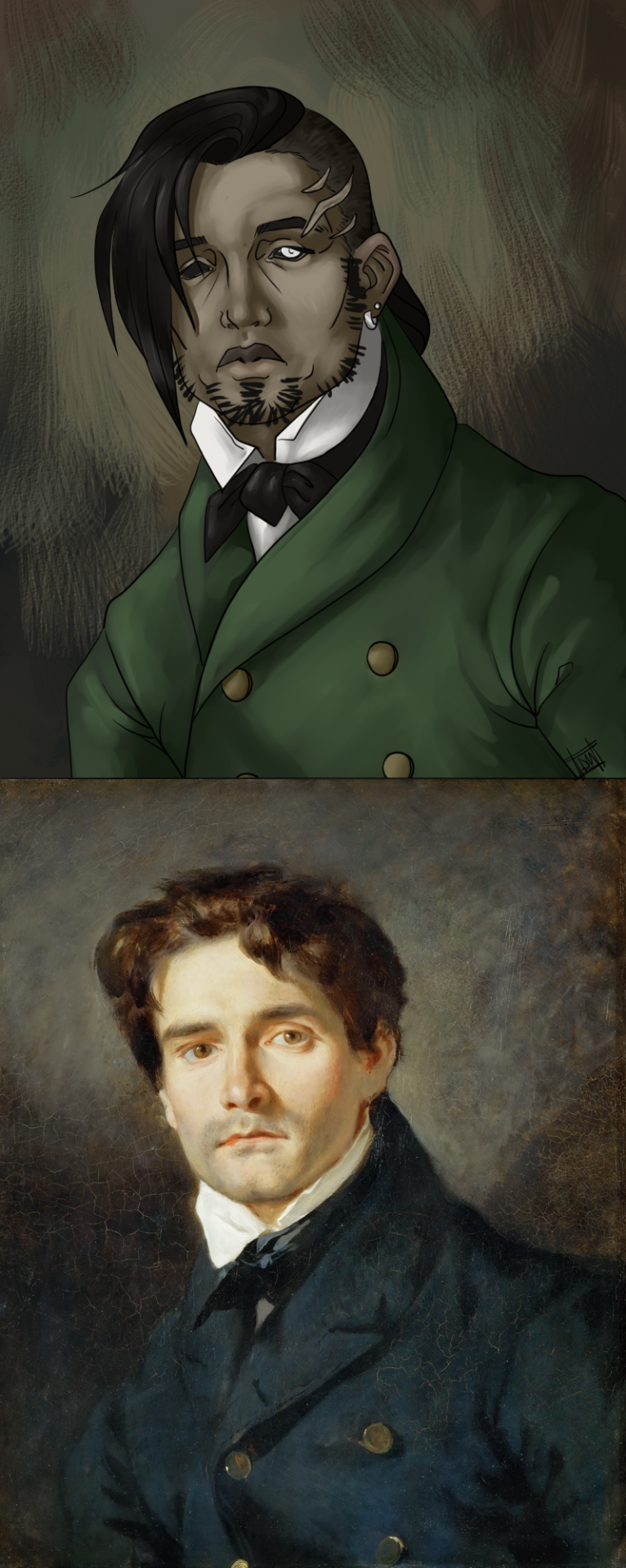
A challenge on Arftol, where you redraw a classic painting with your OC in it. Here we got Reht, still wearing green, but in a fancy shirt. Just a quick little thing, nothing special
I chose the painting 'Portrait of Léon Riesener' by Eugène Delacroix (1835) as my model. Hope you enjoy!
2 notes
·
View notes
Text
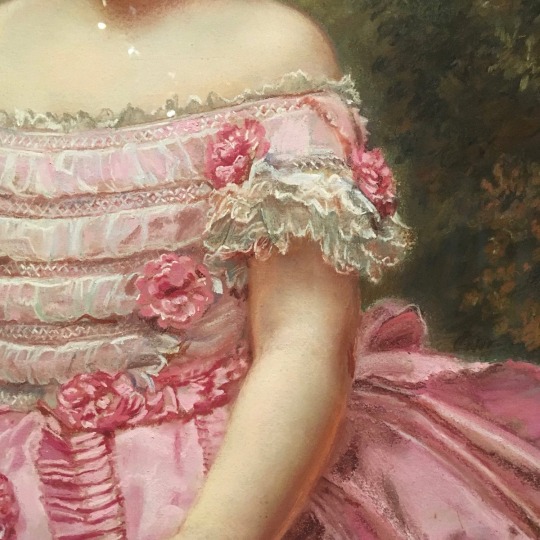
.
Léon Riesener
.
.
.
Detail
1 note
·
View note
Photo

Louis Antoine Léon Riesener (French, 1808-1878)
Portrait of a young woman, 19th century
#Louis Antoine Léon Riesener#leon louis riesener#louis antoine leon riesener#art#fine art#classical art#european art#female portrait#french#france#woman#female#portrait#fashion
28 notes
·
View notes
Text

Léon Riesener (1808-1878).
French Romantic painter.
.
Enchanted by the play of light and reflections which transformed the appearance of matter, Riesener began a new aesthetic that made him one of the precursors of impressionism. A passionate colourist, he researched all the nuances of colour and studied the techniques of ancient Greece and the Renaissance. Impressed by his research into colour, he turned towards Rubens, who for him was the Shakespeare of painting. Very early in his career Riesener studied tonal divisions, well before the physician Chevreul discovered their scientific basis. He put poetry into his painting by the play of shadow and he passionately admired nature, life and all the beauties they produced.
.
He researched the subject of life in the countryside and, liking to paint reality, said he wanted to express "the heat of the day, the melancholy of the evening, meadows, flowers as they are in nature". His study of the elements caused him to paint a series of skies which varied according to the light and time of day – the subjects were ahead of their time and Riesener had to fight hard against the Salon juries and the Institut. Using pure colours, he excluded the blacks and whites which had been used for shadows and light before him. His material science of colour was the opposition which gave birth to contrasts from juxtaposed pigments. He did not portray faces by contours, but by shadows and modelling.
.
Ten years older than Riesener, Delacroix was his first-cousin. He quickly recognised Riesener's talent and originality and he supported his early career by recommending him to civil servants he knew. From childhood, Riesener and Delacroix were friends and confidants. So different in life and character and so independent, they were preoccupied by the same artistic problems and enjoyed exchanging ideas.
.
In 1839, he married the young middle-class Laure Peytouraud and they had three children.
.
Famous works:
Liliums on the forest floor
Portrait of Madame Léon Riesener
Portrait of Théophile Gautier
Romantic young woman in a garden
The Little Shepherd
[Submission]
#history#beauty#historical babe#historical crush#historical hottie#history babe#history crush#history hottie#hottie#19th century#submission#painter#french history#léon riesener
44 notes
·
View notes
Text

Woman in riding costume by Louis Antoine Léon Riesener (1808-1878)
#louis antoine Riesener#19th century#19th c. france#france#riding habit#riding#mdp19th c.#mid 19th century#undated#late 19th century
83 notes
·
View notes
Photo

Léon Riesener. Modèle féminin, nu, assis de trois-quarts, 1842-1846.
679 notes
·
View notes
Photo
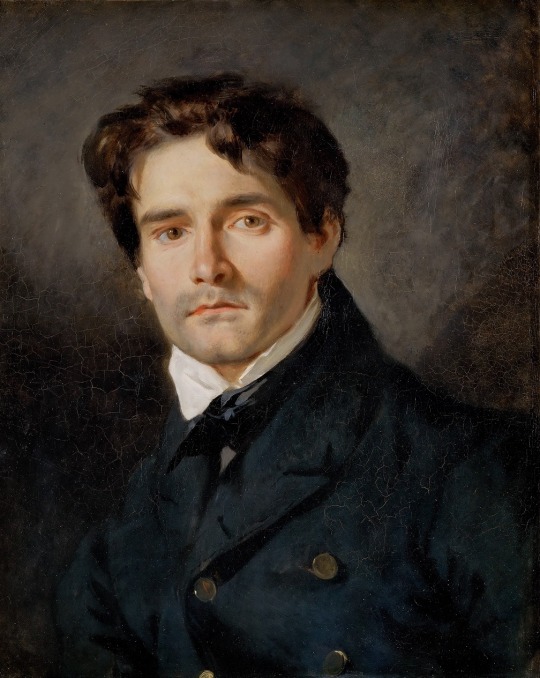
Léon Riesener (1808--1878), 1835 by Eugène Delacroix (French, 1798--1863)
272 notes
·
View notes
Photo

Mlle. Louise Riesener, Berthe Morisot , 1888, Cleveland Museum of Art: Drawings
This pastel portrays Morisot’s friend, the daughter of Léon Riesener, a Romantic painter and a first cousin of Eugène Delacroix. Here she pays homage to the pastel portraits of her friend and mentor Edouard Manet, who had used the medium with exquisite spontaneity in the years leading up to his death in 1883. She restricted herself to the limited palette of Manet’s pastels, using only black and white, with touches of pink at the mouth and blue to enliven the eye.
Size: Sheet: 56 x 47 cm (22 1/16 x 18 1/2 in.); Framed: 75.3 x 66.2 x 4.5 cm (29 5/8 x 26 1/16 x 1 3/4 in.)
Medium: charcoal and pastel
https://clevelandart.org/art/1958.41
6 notes
·
View notes
Photo
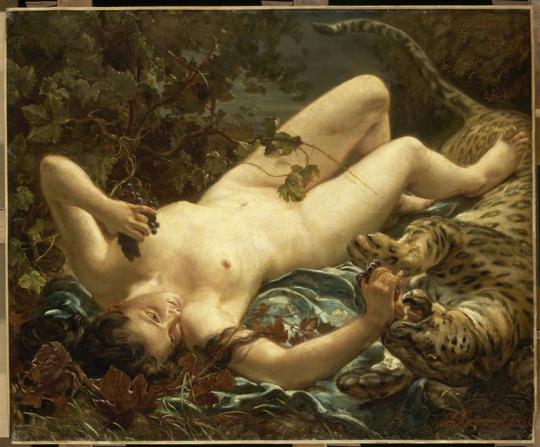
Léon Riesener Erigone
77 notes
·
View notes
Photo

source: antonio-m
Léon Riesener, Eugène Delacroix
1 note
·
View note
Photo
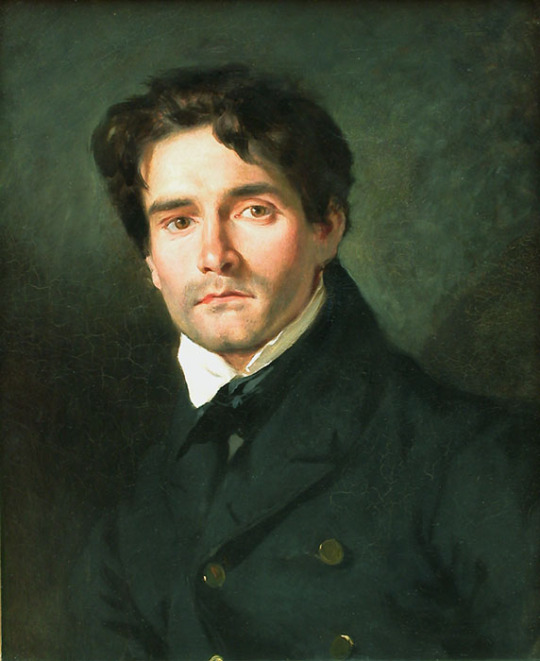
Léon Riesener, 1835, Eugene Delacroix
21 notes
·
View notes

